PSV met Galatasaray at the Philips Stadion in this latest UEFA Champions League Qualifying fixture. It was great to see fans returning as the stadium was packed with 23500 audiences to enjoy this six-goal show. Roger Schmidt’s team ruthlessly put five past Fernando Muslera and they killed the second leg already.
This tactical analysis introduces the key tactics of PSV in their first official home game of the season. The hosts were energetic in the press and scored some great counter-attacks goals, while they were also dominating most of the game. Comparatively, it was a terrible performance from Faith Terim’s team – one which the Galatasaray fans would like to forget about.
Lineups
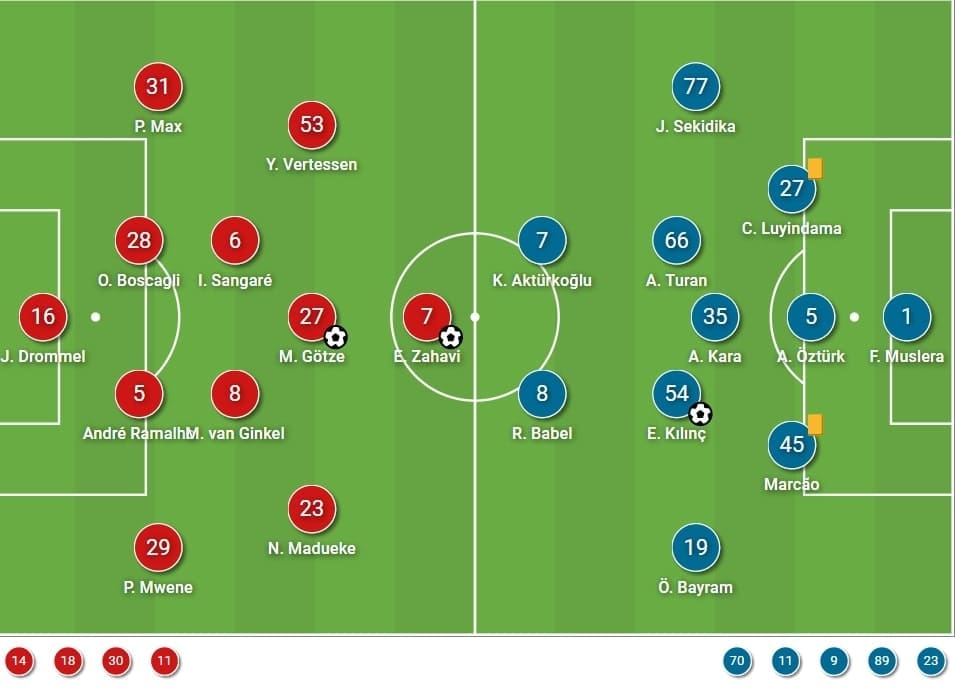
PSV lined up in a 4-2-3-1 formation but flexibly adapted to different shapes in different circumstances – the most important was how the players grasped principles of Schmidt’s philosophy of play. Their new recruit – Davy Pröpper from Brighton – started on the bench but both Joël Drommel and André Ramalho started in the defence.
Galatasaray started in a 3-5-2 formation to try to limit the offensive threats of their opponents but quickly changed to a 4-1-4-1 as after the early goal. Some famous players such as former Liverpool and Ajax winger Ryan Babel and former Barcelona and Atletico Madrid midfielder Arda Turan both started the game.
PSV pressing to score
Pressing may not have been very common 10 years ago, but is very much a current trend and we see variations with different teams. Schmidt was the former head coach of RB Salzburg and he was also impacted by Ralf Ranginck and the “Stuttgart School”. His pressing was highly objective-driven, and the main reason to press was not merely stopping the construction of the attack, but to create opportunities.
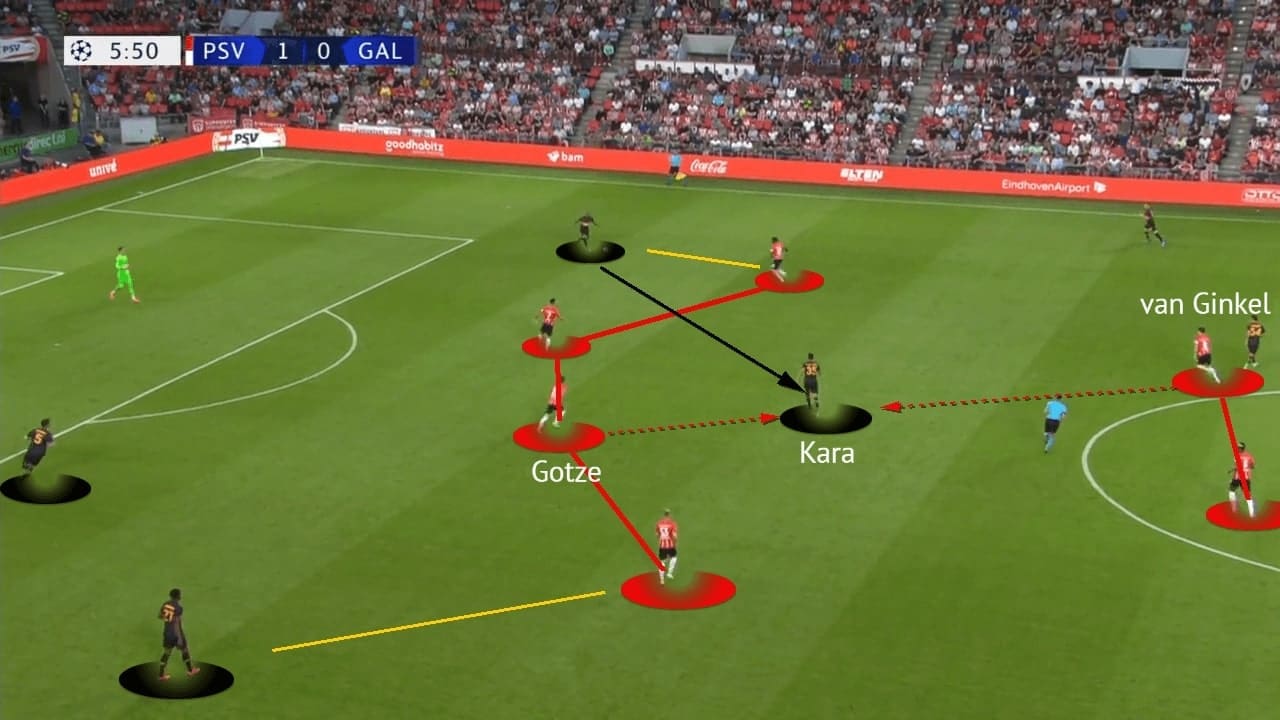
PSV pressed high from the first kick of the game. They roughly held a 4-2-4 shape with high wingers and high offensive midfielders to form the first line with Eran Zahavi. All the front players were packing in the central areas and supported by a deeper pair of midfielders. The defensive line was quite high to reduce spaces behind the midfield, so Galatasaray could not play between the lines.
Schmidt had so many strategies in pressing – he set several traps in this game to help his team win the ball in favourable situations. The first shows their midblock shape against the 3-1 build-up of Terim’s team – they had wingers matching wide centre-backs in the half-spaces but Mario Götze was not man-marking the pivot. Instead, he stayed high with the striker to get closer to the centre-backs leaving Aytac Kara as bait in the centre.
Sometimes the wingers were a bit far away from the wide centre-backs. Galatasaray still had the angle to play the first pass, but this pass from Marcão was straight into the trap. When Götze and Marco van Ginkel read it they both sprinted to double-press Kara from two angles, forcing a poor pass and the ball was kicked to the PSV backline. Galatasaray struggled to construct in their rhythm under pressure whenever PSV came out.
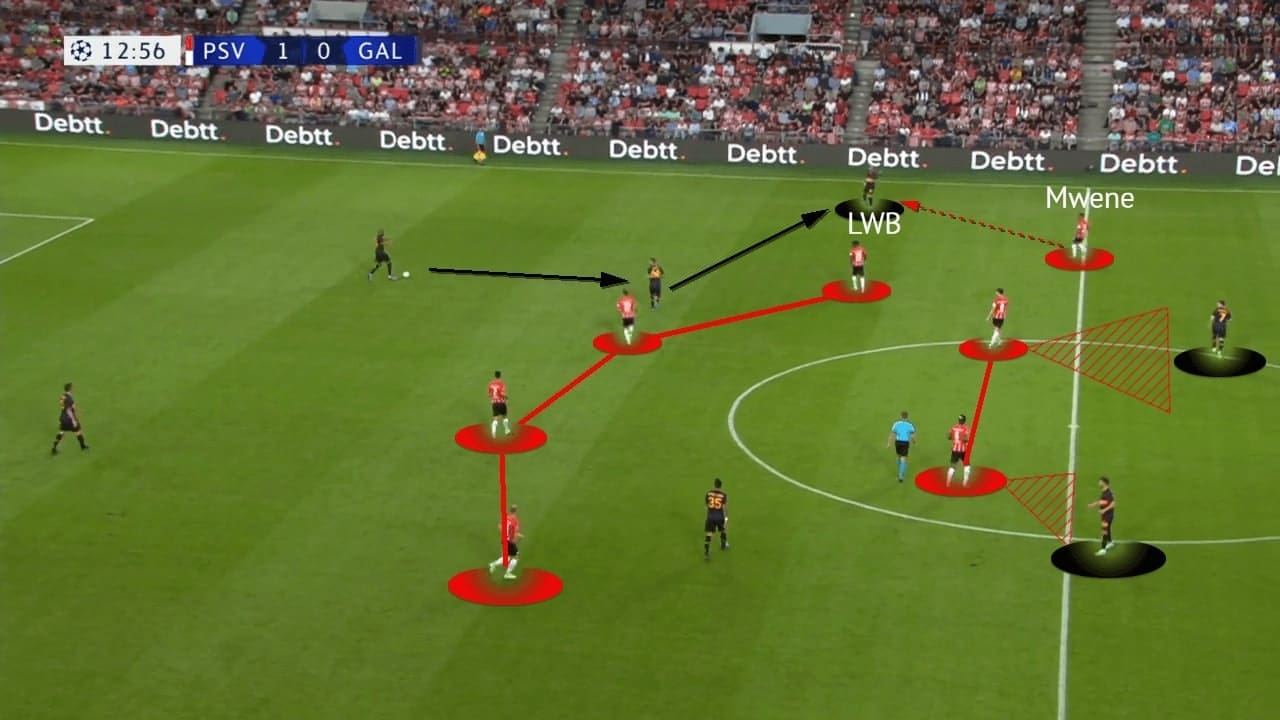
Since the 4-2-4 shape of PSV was centrally-oriented and the wingers were staying narrow to press the centre-backs, wide spaces were inevitably conceded but they never panicked when Galatasaray went wide. In the midblock shape, the ball-near full-back always stepped up early to approach the wing-back, which you could see from the above image through Phillipp Mwene’s positioning. With this approach, the centre-backs would not be exposed as the defensive midfielders could stay at the centre.
On this occasion, Galatasaray quickly advanced the attack to the left wing-back.
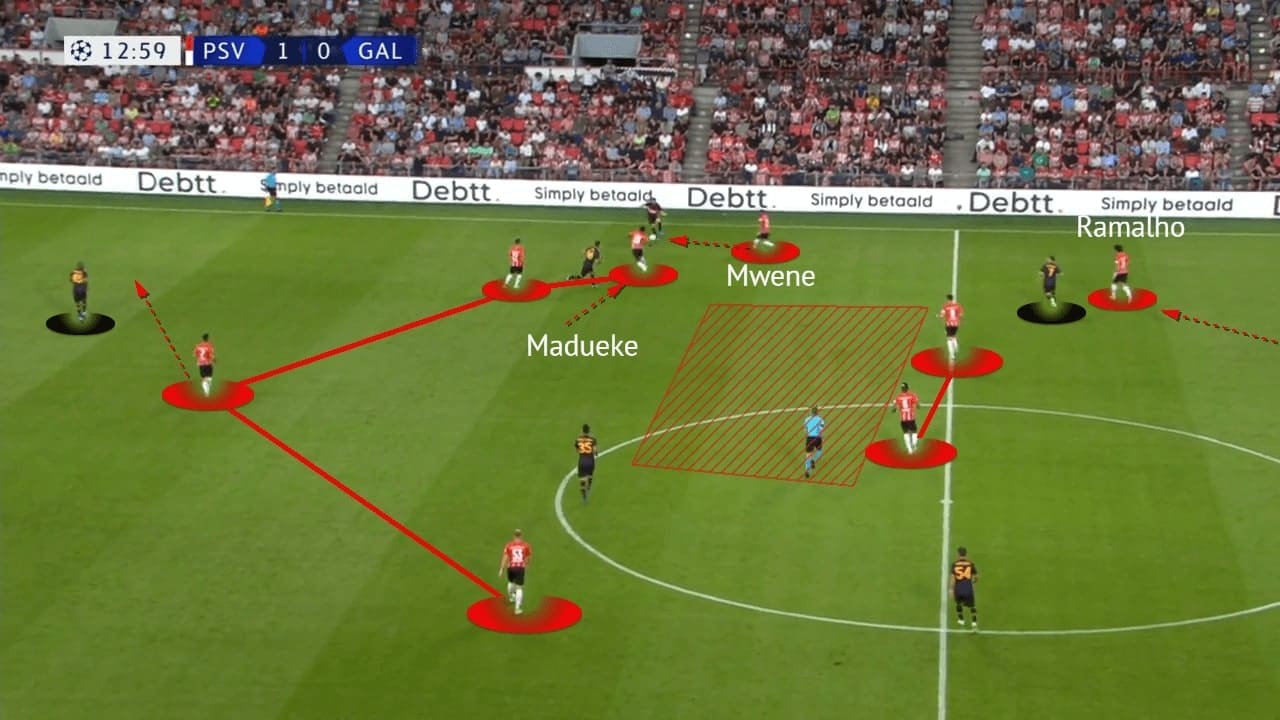
But this was a side trap from PSV! Since the right-back stepped up early, he could press on the backfoot when Ömer Bayram dropped to receive. In the meantime, other defenders also adjusted positions to keep the defence compact, such as Ramalho moving up to cover spaces behind Mwene.
The side trap was obvious. Apart from the Mwene’s pressure, Bayram also faced the press from Noni Maudeke from the centre, who cut the passing lane to the inside. Passing back to the centre-back was a trap inside a trap as Zahavi smartly stayed higher to monitor that passing lane. There was no way to escape when Galatasaray entered the side trap.
The positioning of the midfielders was crucial as well – they needed to dictate the central spaces so no pass could play into spaces in front of the centre-backs, while they were also covering the red zone.
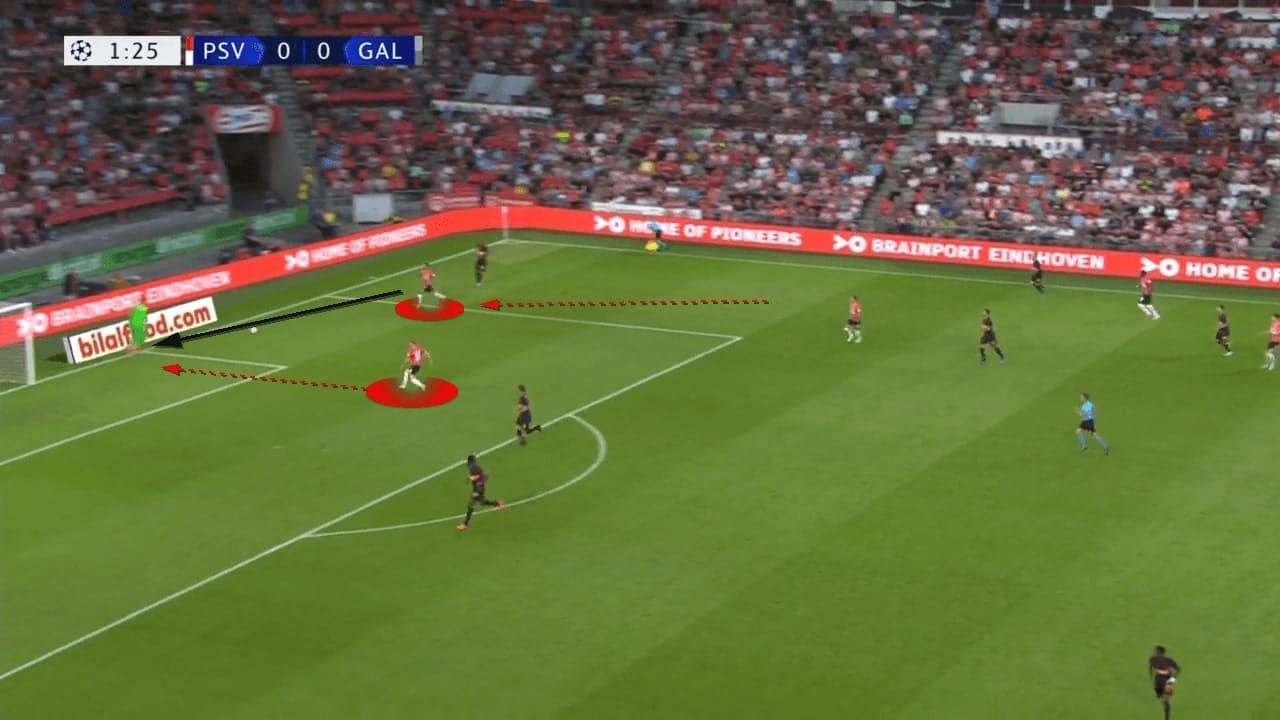
With these pressing concepts, we can delve deeper into how Schmidt’s team pressed to score the goals. They had a wonderful start as Muslera made a mistake when receiving the pass from centre-backs – it was his fault as the touches were unnecessary.
From PSV’s perspective, the goal was attributed to the concerted efforts of Zahavi and Yorbe Vertessen. When the Israelian striker was pressing from the flank, Vertessen was also pressing from the centre simultaneously. Therefore, Muslera already faced danger from two angles before the ball reached. His intention should have been moving the ball to his right foot and kicking it away – but he might not be aware of Vertessen’s from that side as teams usually only use one striker to press the goalkeeper.
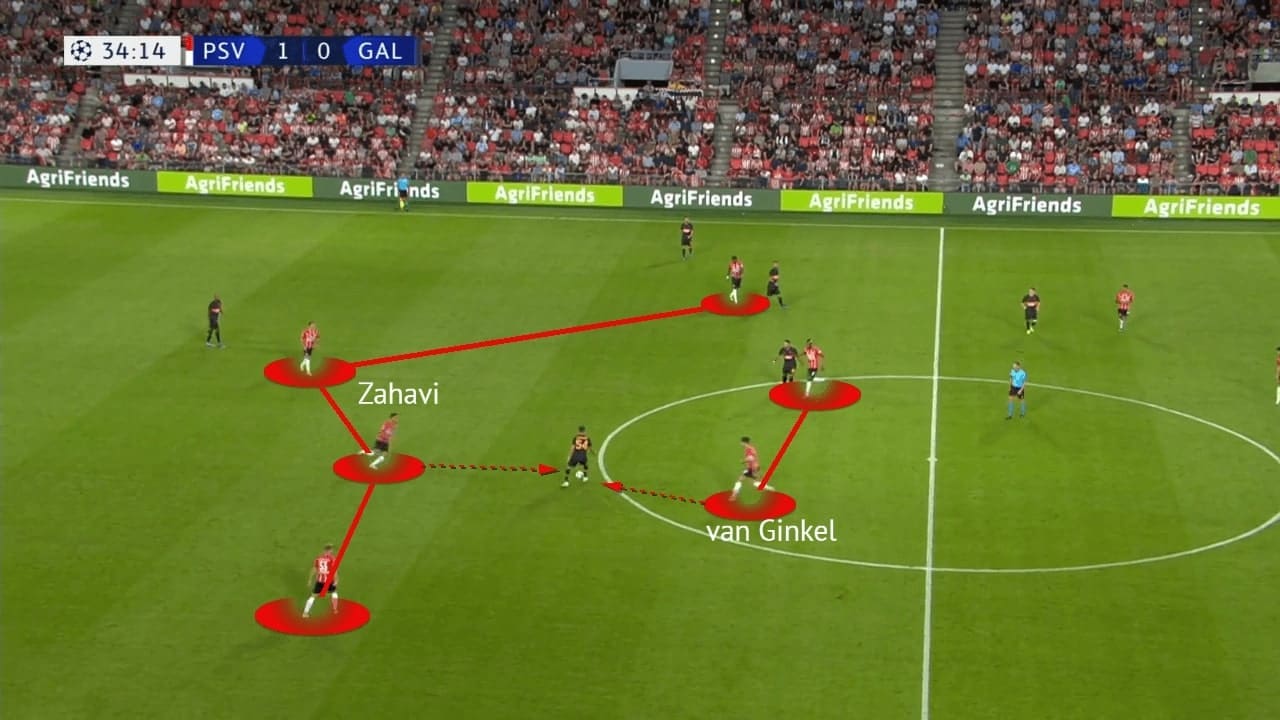
The second goal was down to the midfield pressing trap. After Galatasaray switched to a 4-1-4-1, they had more spaces in the build-up and the first pass was a bit better. However, when they tried to play between the lines, the player confronted pressure from multiple angles and the Turkish side could not keep the ball.
Here was the pressing scenario: when Emre Kılınç dropped to receive, he was already seen by Zahavi and van Ginkel, and both immediately sprinted to press him. The double-press made Kılınç panic and PSV recovered the ball in the central third – with so many players available to join the counter-attack.
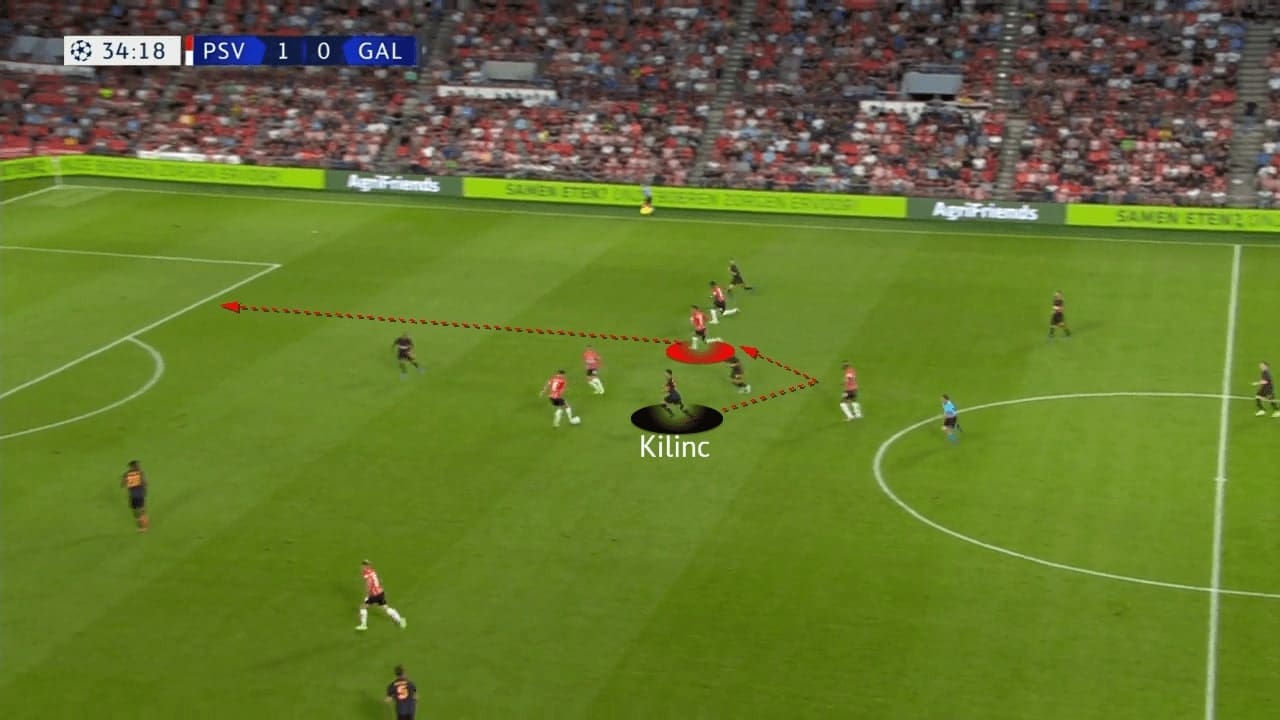
And PSV would not stop winning the ball back – the intention was not to keep possession, but to encourage breaking the lines and creating the opportunities. Even Zahavi was the one to win the ball back, he switched to an offensive mindset and attacked the penalty box as quick as possible.
From the above image, you could see how quick he spun away from Kılınç to exploit spaces leaving between and behind the loose backline.
It was a well-deserved goal from Zahavi’s hard work.
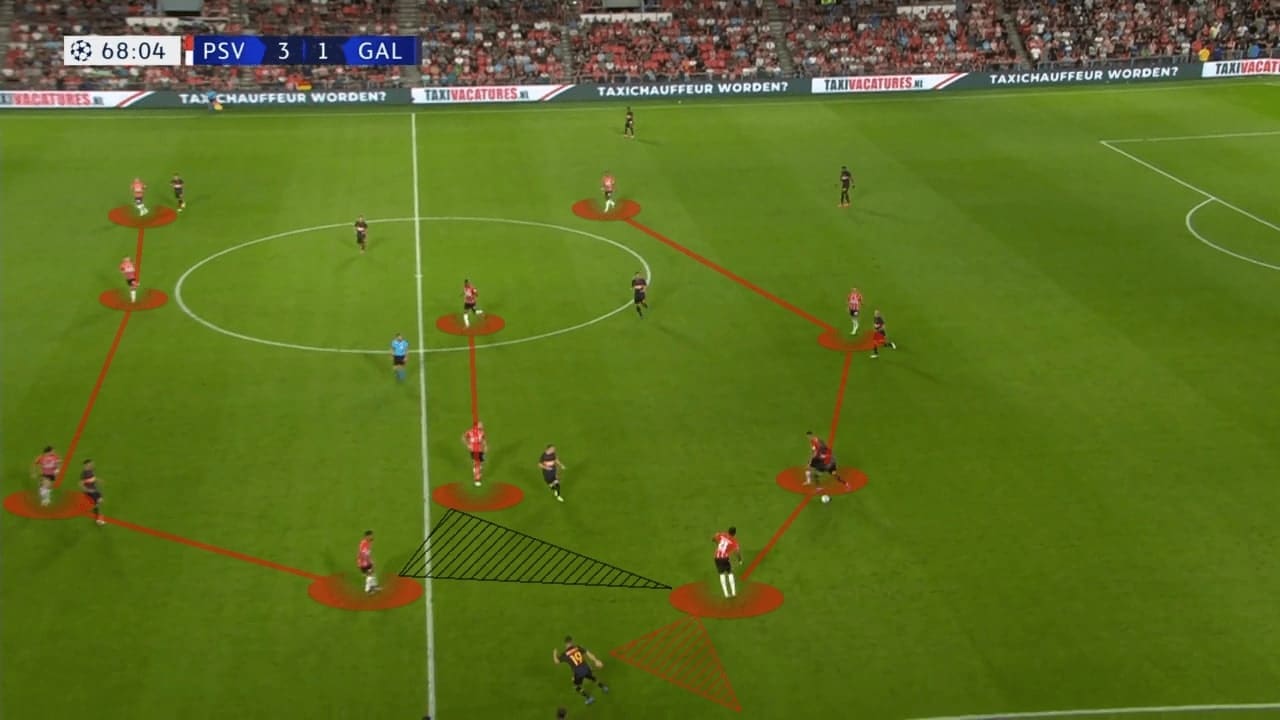
When Galatasaray switched to a 4-1-4-1 shape, the build-up was better as the centre-backs on the ball had more spaces to play while there was one more man at the midfield. However, this did not help to create more opportunities as the Turkish side only had seven shots and one on target in the Netherlands.
PSV should get credit for the way they adapted to their opponent’s changes. They were also good at holding a deeper shape during the lead and kept Galatasaray quiet. The above image shows the right-winger: Maudeke flexibly adjusted his body angle to shadow the left-back so Mwene could be closer to block the vertical passing channel in the half-spaces.
Meanwhile, the PSV strikers were not stopping – they continued to press or double-press the ball-carrier at any time.
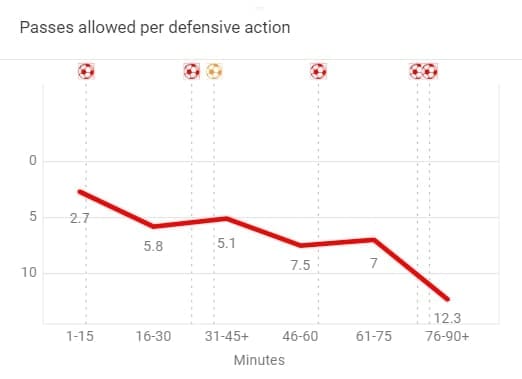
PSV stretching the defence horizontally
Offensively, PSV were the better side as well. They had some clear strategies to move the ball forward and create the opportunities – we will explain them one by one in the second part of the analysis.
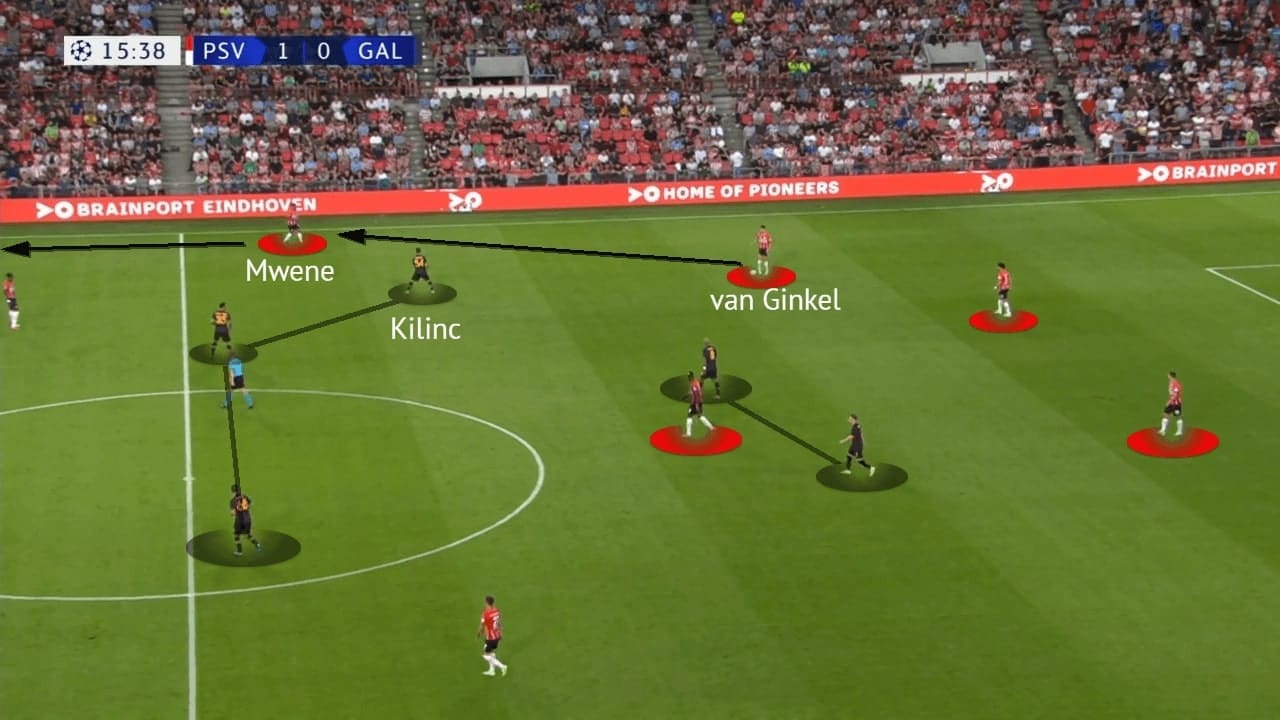
Since Galatasaray were not pressing high, most PSV attacks started in the second phase of the attack. In the centre, they hold a 2-2 shape with centre-backs and midfielders – the 3-1 shape with van Ginkel dropping into the right half-spaces was a variant of that. Also, they used a pair of wide full-backs to hold the width on both sides so they could always move the ball from one flank to another.
The 5-3-2 defensive shape of Galatasaray was never enough to stop the progression of the opposition. Against two strikers, the temporary back three of PSV always had an extra man. If the Galatasaray wide midfielder stepped up as Kılınç did in the above image, then the PSV full-back would be free as the winger pinned the wing-back. Mwene received freely from van Ginkel in this example.
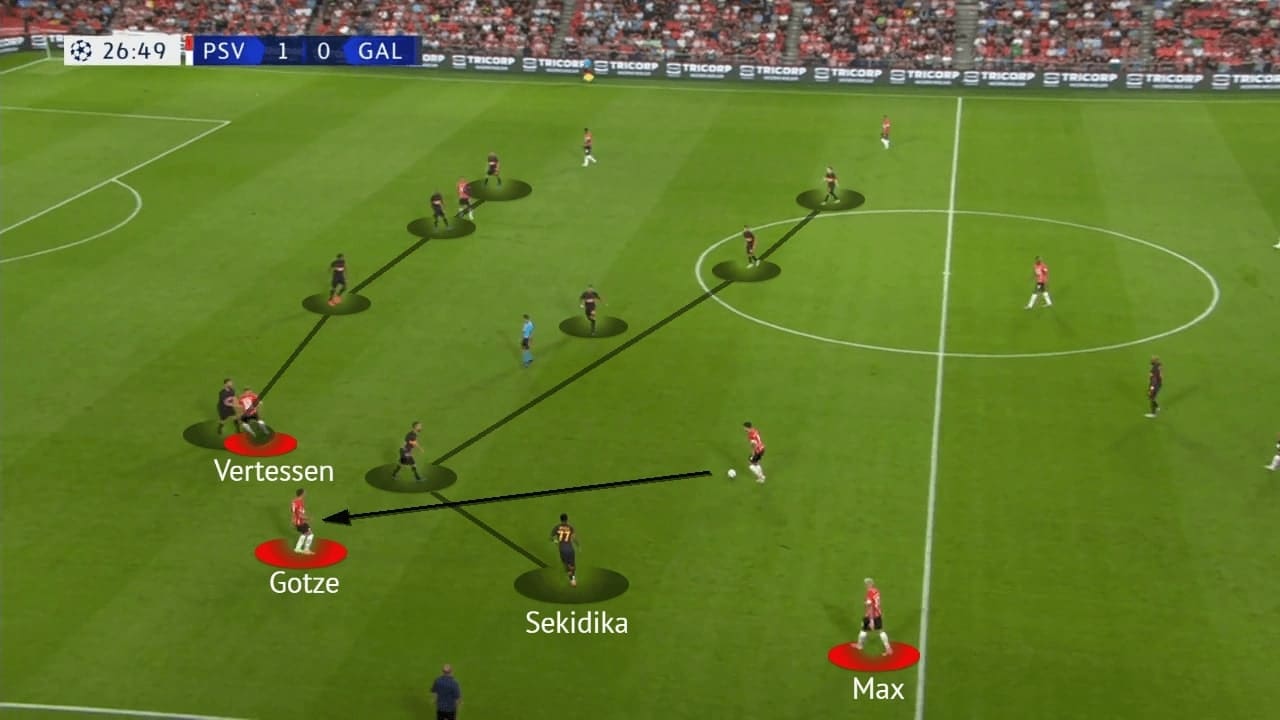
Another interesting feature of PSV’s attack was Götze’s positioning. The World Cup winner was the “No.10” of the team in a 4-2-3-1 formation but turned out to be operating in the left half-spaces more often.
As suggested previously, Galatasaray switched to a 4-1-4-1 after a quarter of an hour to achieve better control on the opposition full-backs. In this image, Jesse Sekidika was now the right-winger and he got closer to Max. But the problem was they failed to limit the threat of Götze at left half-spaces. Since the PSV wingers always pinned the Galatasaray full-backs inwards, the wide defenders would not be able to step up on Götze.
When Götze received, Vertessen would be running on the blindside of right-back to offer another progressive option behind.
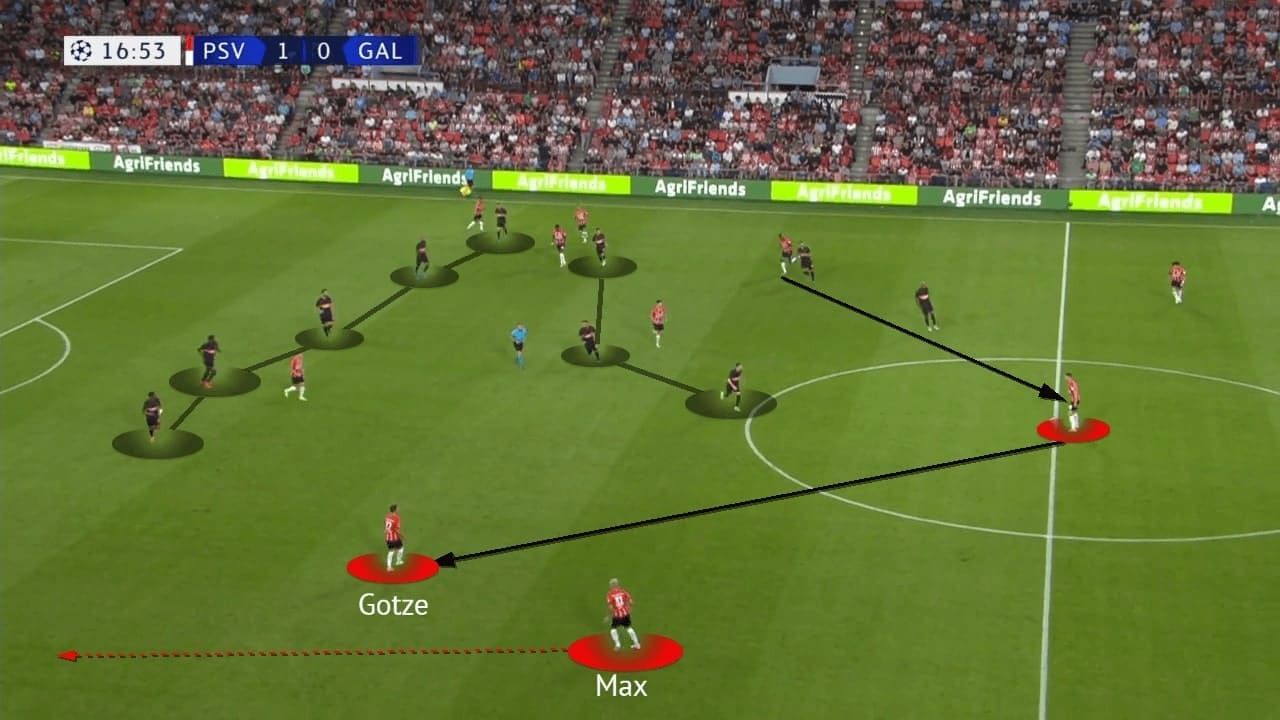
Galatasaray were also vulnerable when dealing with switches. Since the 5-3-2 formation of PSV only had three midfielders, they were never quick enough to shift from one side to another – the distance to travel was too big. In PSV’s construction of the attack, they were a bit sloppy on the right when the opponents had numbers to defend, but the switches through centre-backs kept the attack fresh.
Here, PSV switched from the right to left. Götze appeared in that vacated deep left half-space as Zahavi pinned the wing-back narrow. As noted, the midfielders of Galatasaray were never reaching that flank as they were initially on the opposite side.
The full-backs of PSV were very aggressive to join the attack, Max already began his run on the left before Götze received.
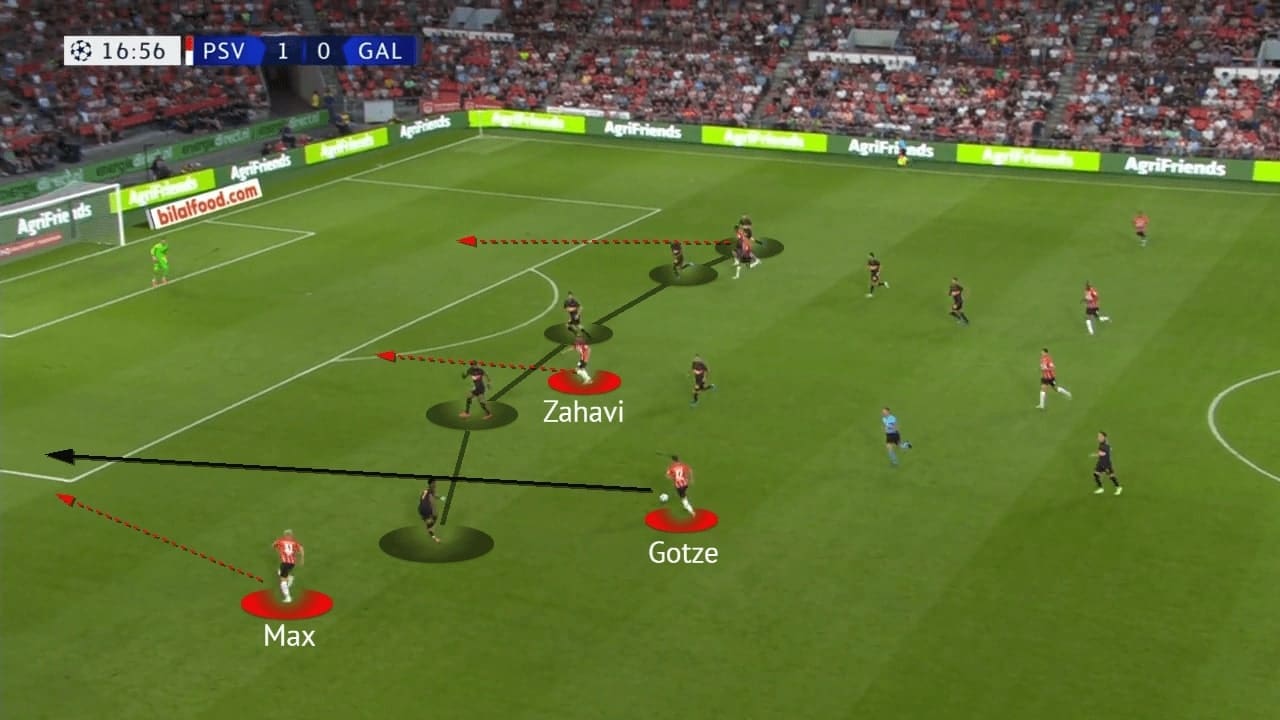
And you could see the stretched defensive line after PSV switching the attack. Götze had the ball in the left half-space, but none of the defenders could step up as Max already opened another offensive channel. Therefore, the former Bayern Munich player could freely feed a forward option with his through pass.
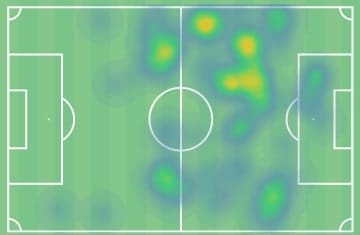
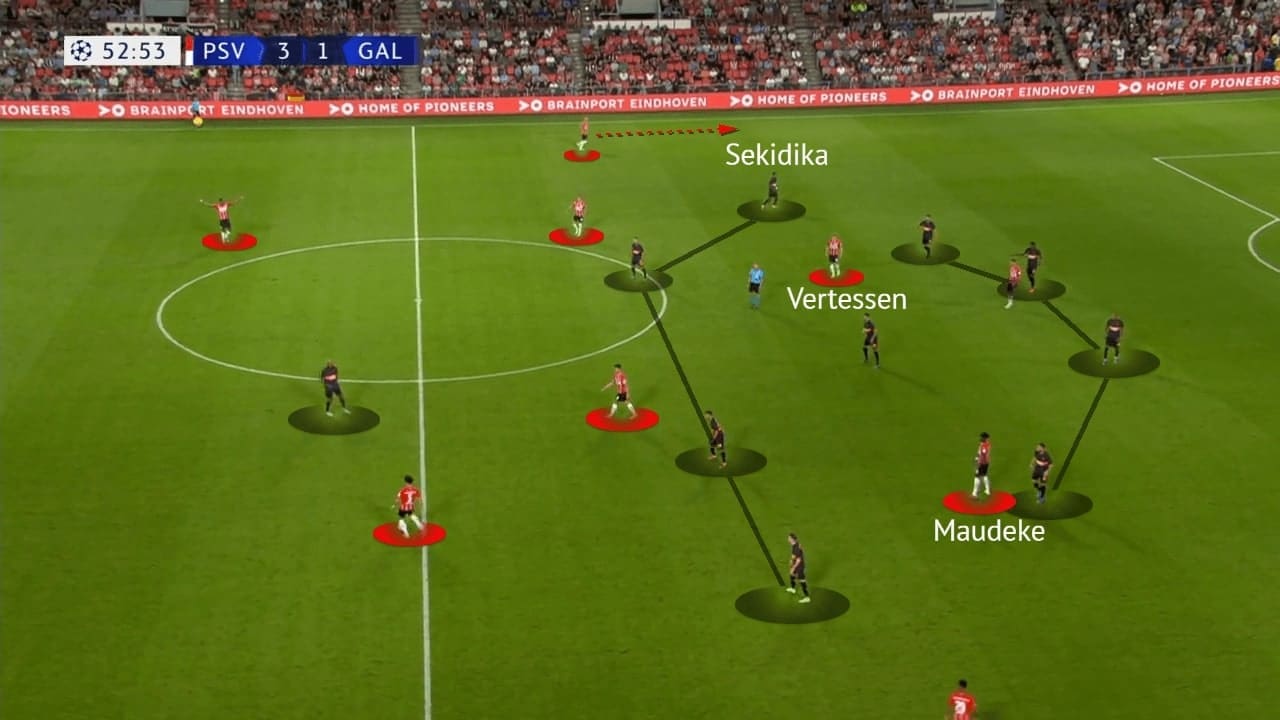
Even when Terim changed Galatasaray into a back four system, the players just fell back to a back five as the far-side winger was defending very deep. Out of possession, the Turkish side was too passive as they never pressured the ball.
Here, you could see the narrow front three of PSV, pinning the Galatasaray defence at the centre by inverting Vertessen and Maudeke in the half-spaces. When the left-back Max went higher, Sekidika inevitably dropped deeper to cover, but then it was a back five again, the changes had no real effects on the defending.
In the meantime, the 4-1-4-1 formation remained one striker at the front, and PSV could easily bypass him with simple passes.
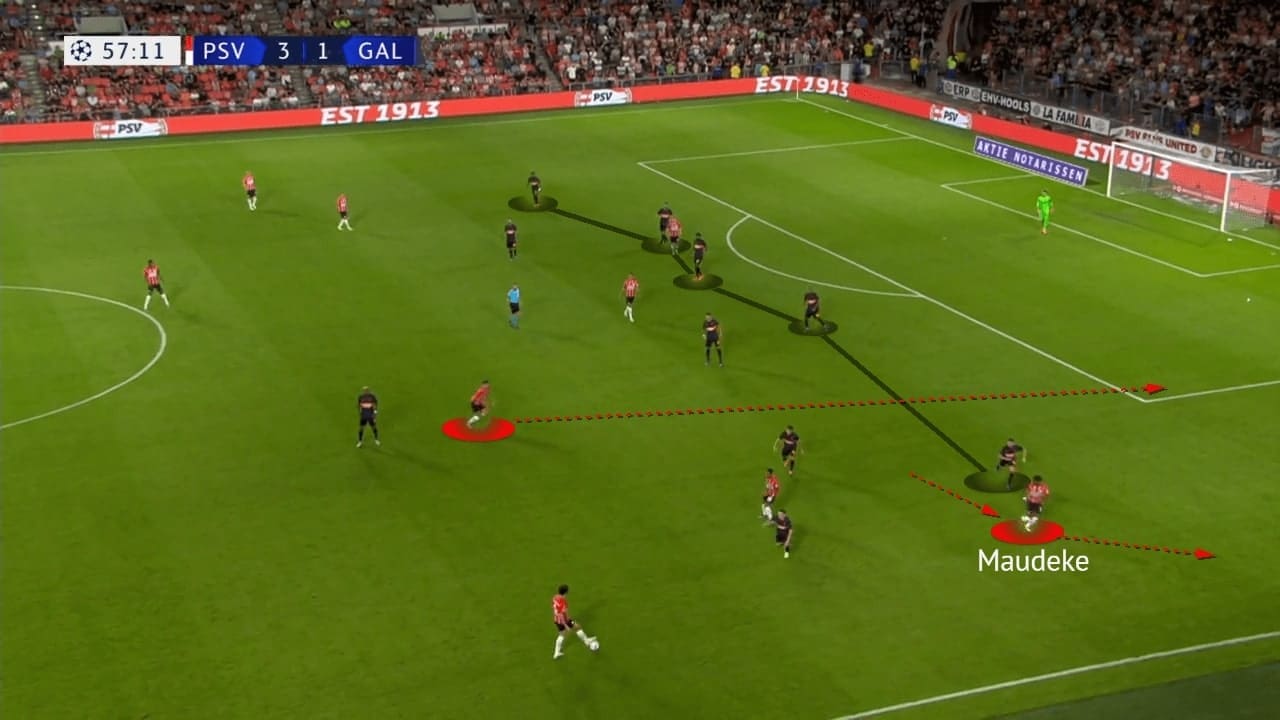
After the break, we saw more dynamics from PSV’s offensive plays as their wingers did some different movements. In the final third, we saw the likes of Maudeke and Vertessen drifting from inside to outside, stretching the defence horizontally to open the half-spaces channel.
In this image, Maudeke moved to the outside and brought the left-back wide. Even in a back five, Galatasaray never shifted on time to close the gaps and PSV could always exploit the channels by deep runs and through balls.
The first goal from Götze was also coming from the patterns: wide wingers to stretch and deep runners in half-spaces to score.
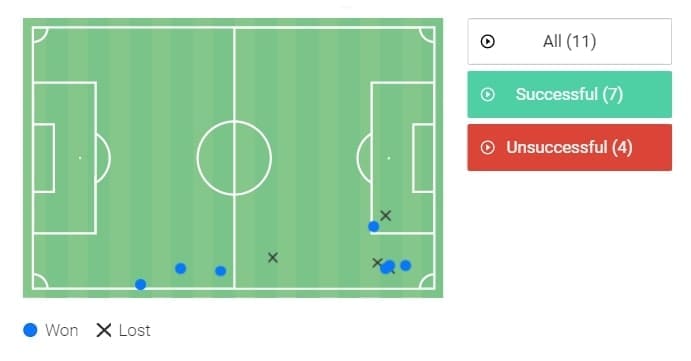
Final remarks
PSV were clearly the better side in this game – they created far more than the opposition and fully deserved to win by a huge margin. Among all perspectives, the pressing of Schmidt’s men was very impressive and goals were attributed to this mindset. Although some key players such as Donyell Malen and Denzel Dumfries were not even in the lineup, the team still had enough quality to beat a traditional force from Turkey.
It was a very disappointing game from Galatasaray – not only the result but also their process. The team offered almost no threat to the opposition – big names players such as Turan and Babel were not able to impact the game enough. They let PSV play their game too easily and rarely showed the desire to compete with the opponent away from home.





Comments